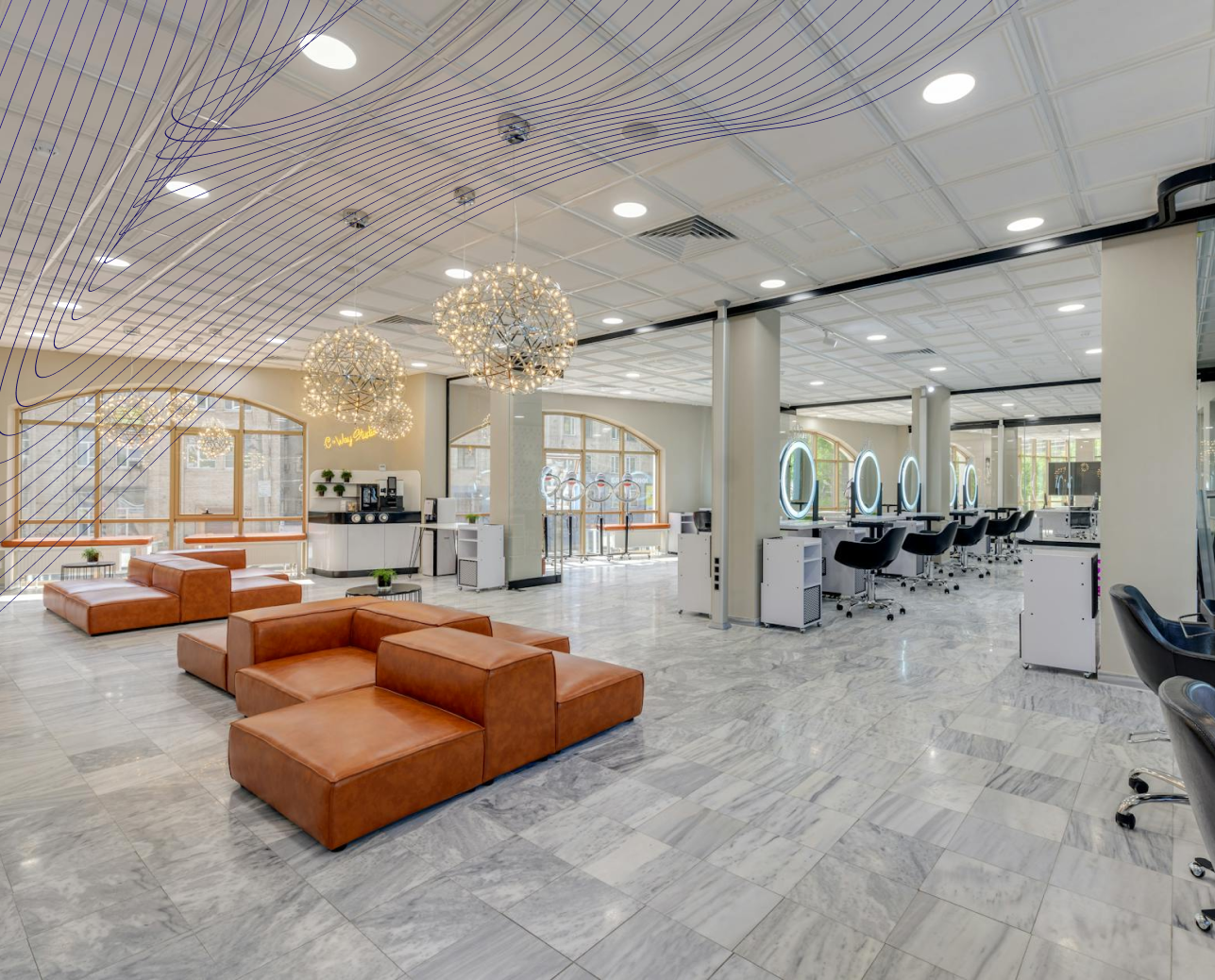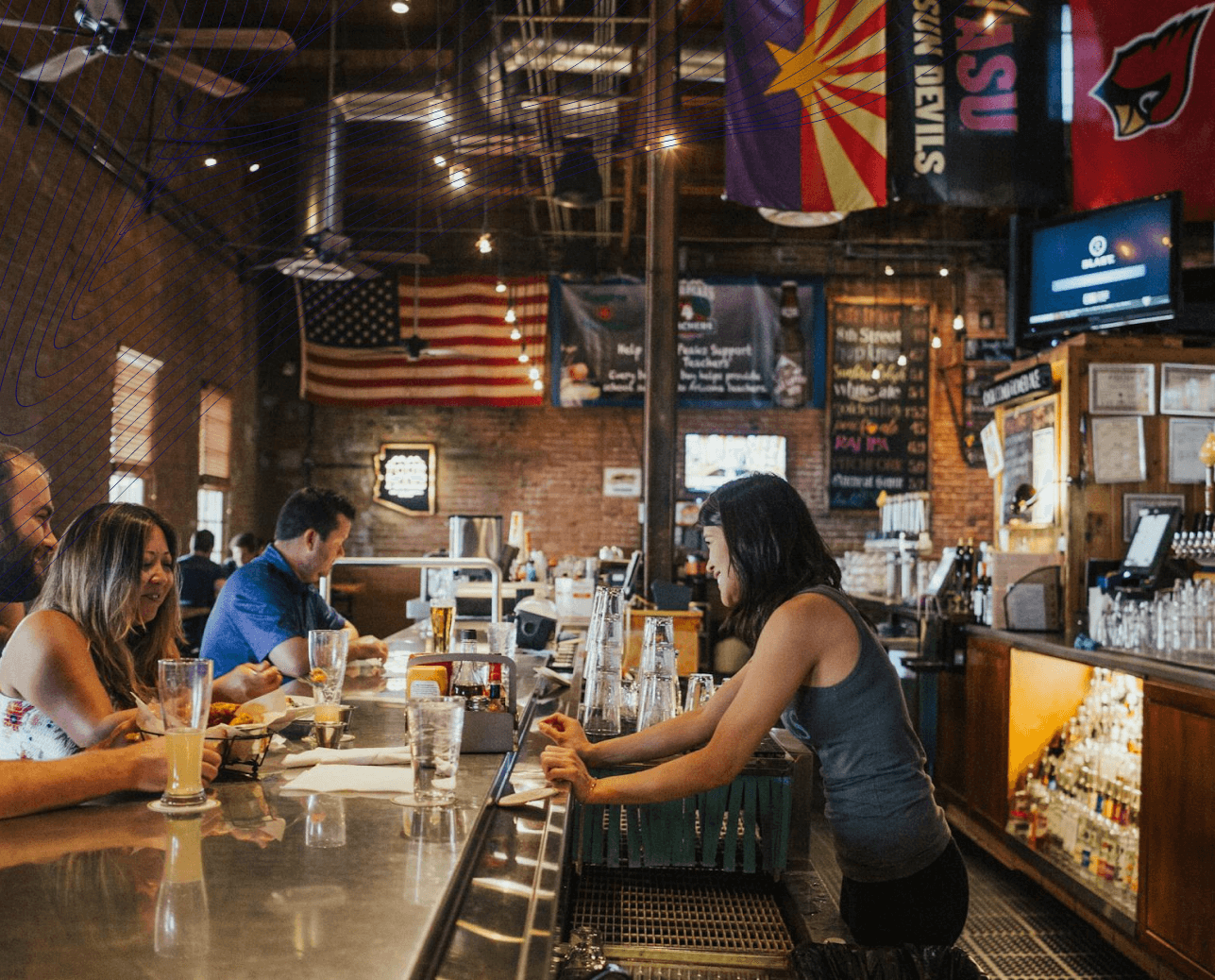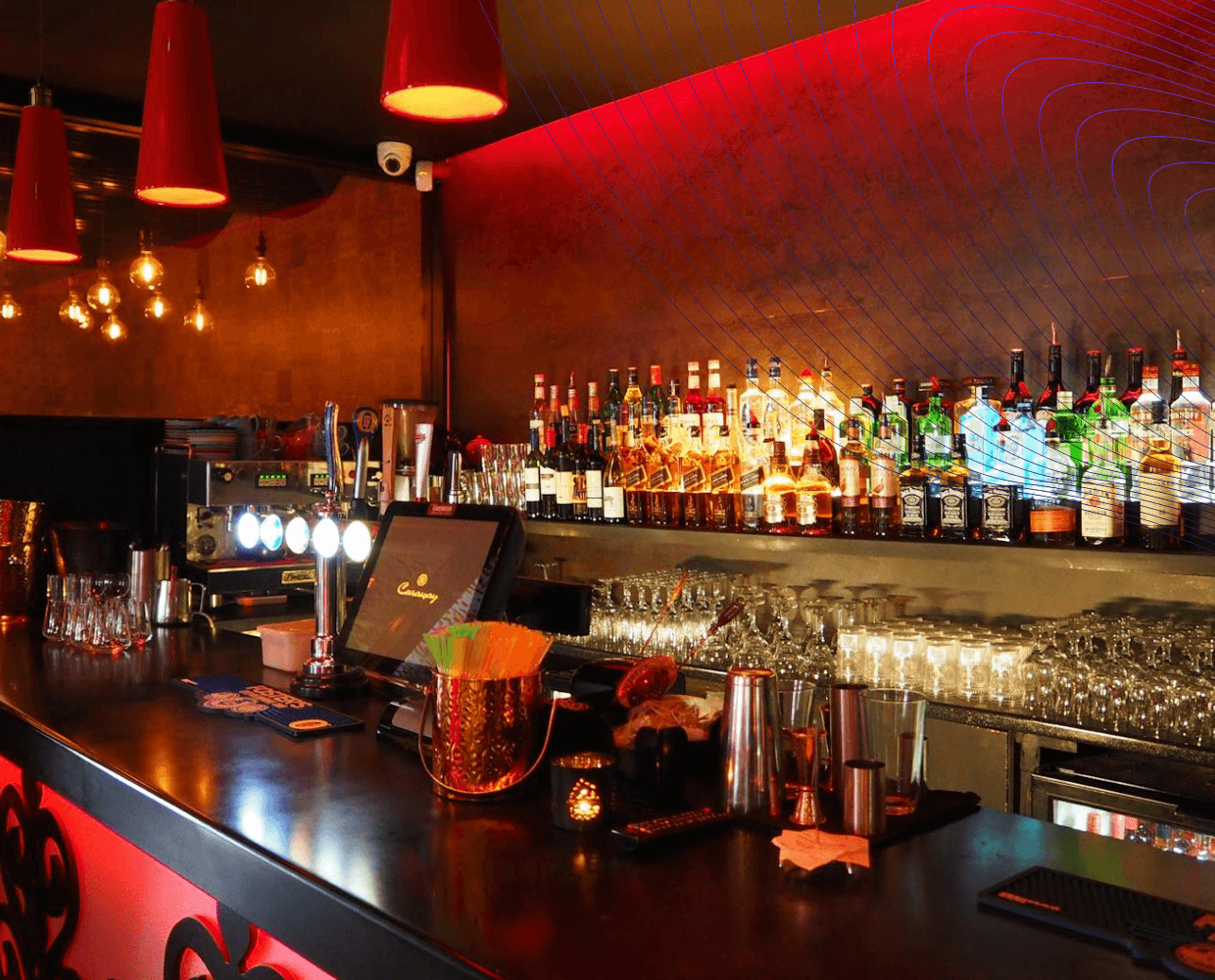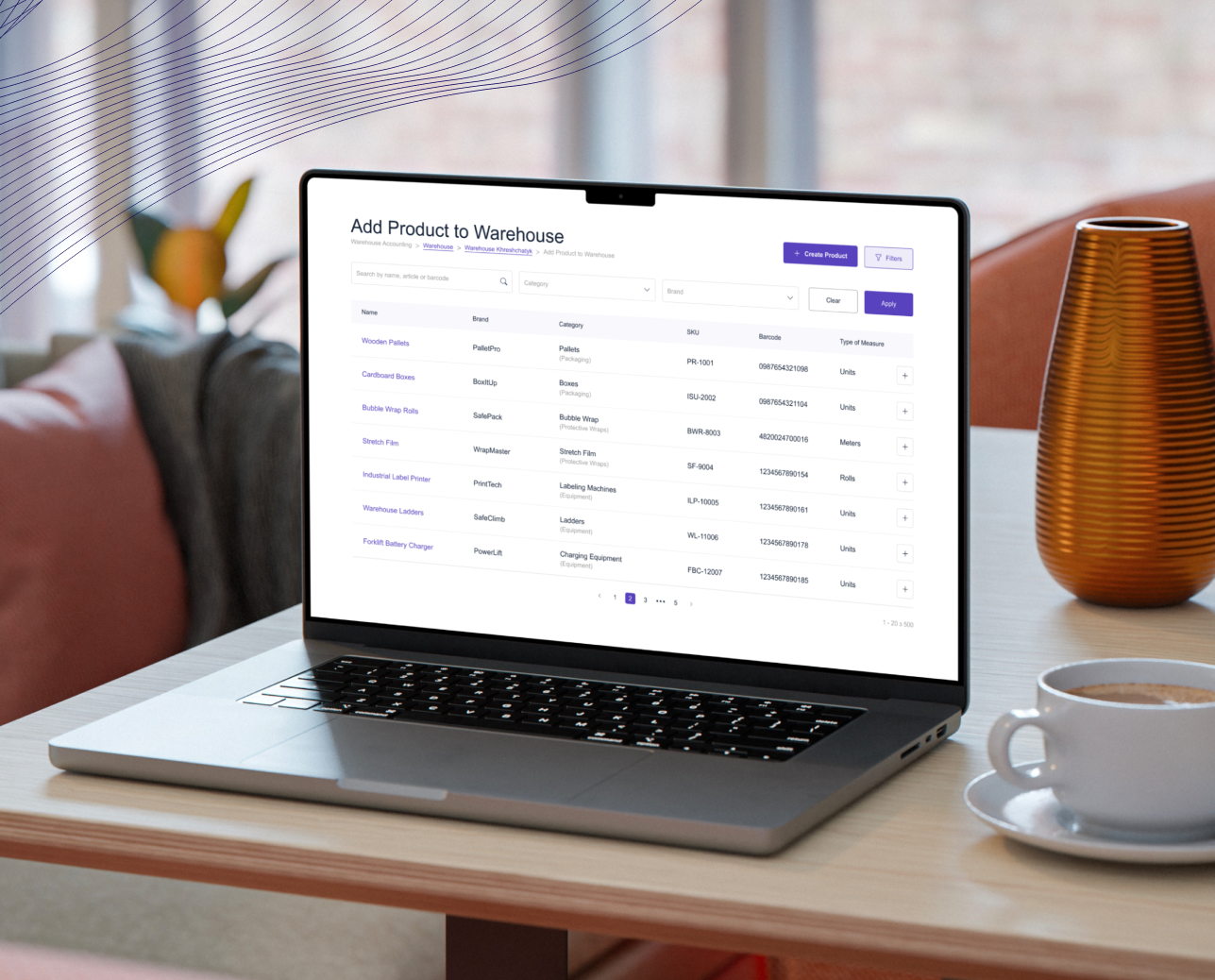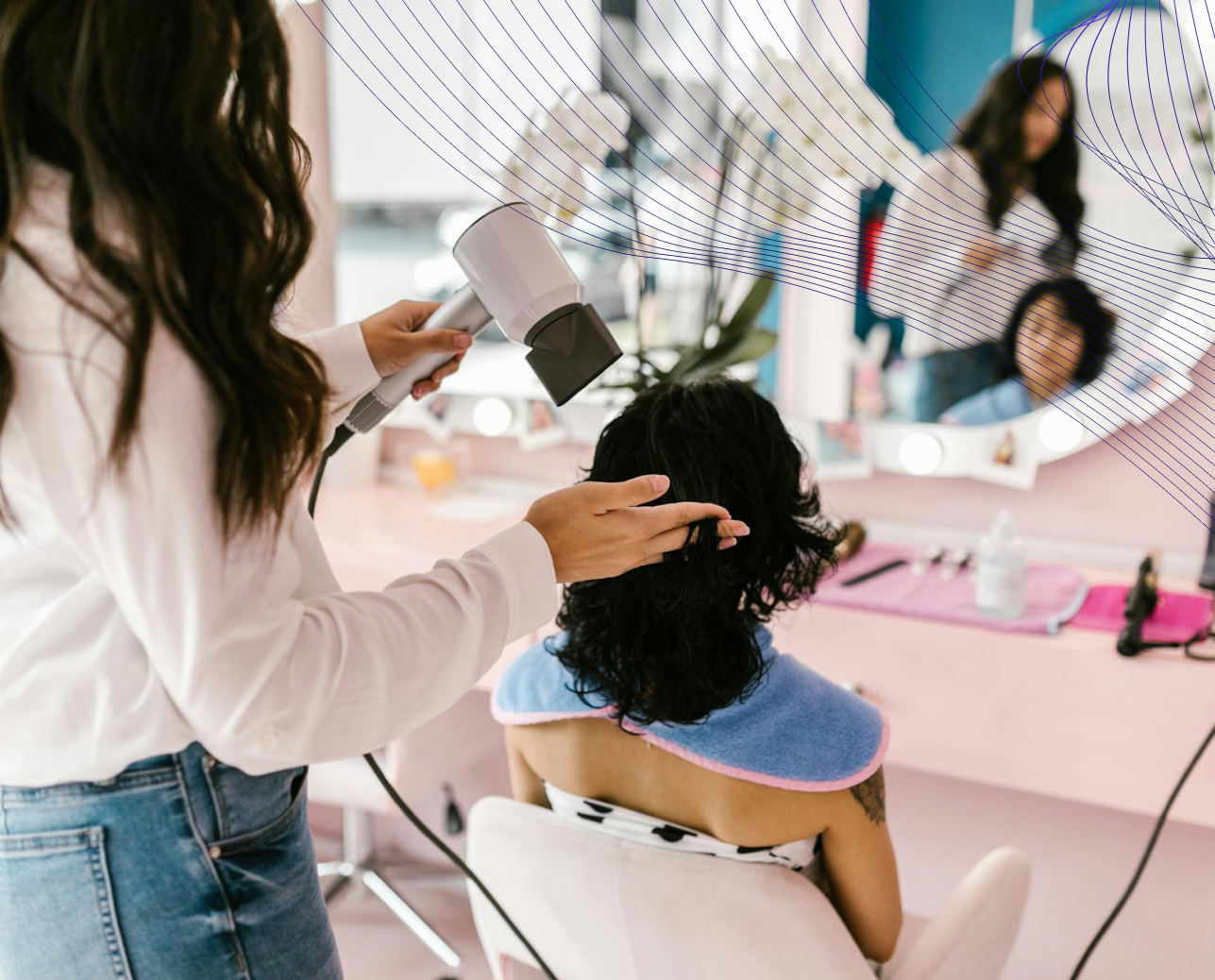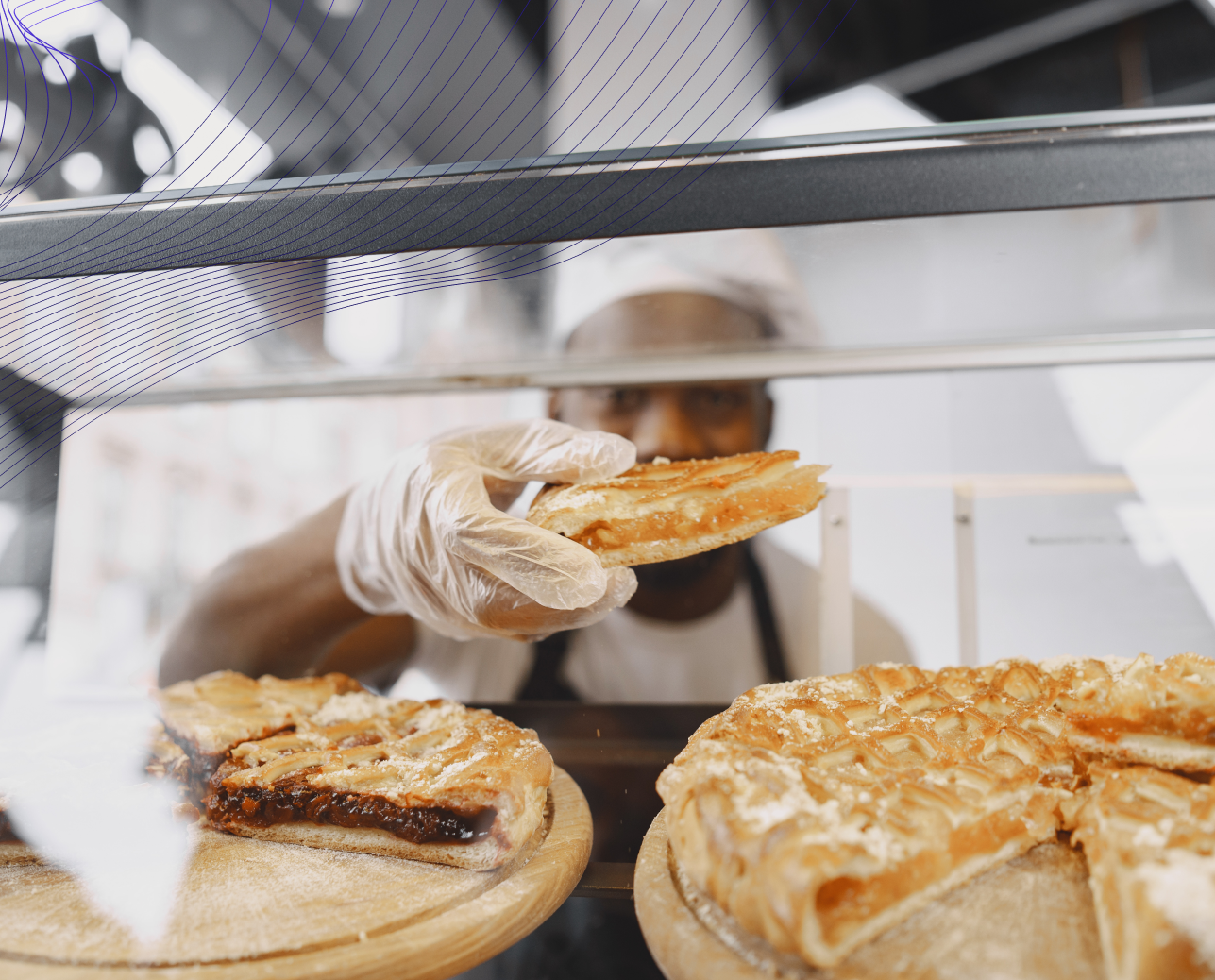Як відкрити кав'ярню?
Відкриття кав'ярні може бути корисним бізнес-проектом, що поєднує любов до кави з можливістю створити громадський простір. У цьому посібнику ми розглянемо основні кроки та міркування щодо відкриття успішної кав'ярні, включаючи планування, юридичні та фінансові аспекти, облаштування кав'ярні, підбір персоналу, маркетинг, запуск та управління повсякденними операціями. Глибоко розуміючи ці компоненти, ви зможете зорієнтуватися в складнощах відкриття кав'ярні, забезпечивши довгостроковий успіх і задоволення від роботи.

Навіщо відкривати кав'ярню?
Кав'ярні стали невід'ємною частиною міської культури, слугуючи соціальними центрами, віддаленими робочими місцями та місцями проведення різноманітних заходів. Стабільний попит на каву, зумовлений її популярністю серед різних демографічних груп, робить відкриття кав'ярні прибутковою справою. Культурне значення кав'ярень зросло, зробивши їх невід'ємною частиною повсякденного життя багатьох людей, пропонуючи простір для релаксації, соціальної взаємодії та продуктивності.
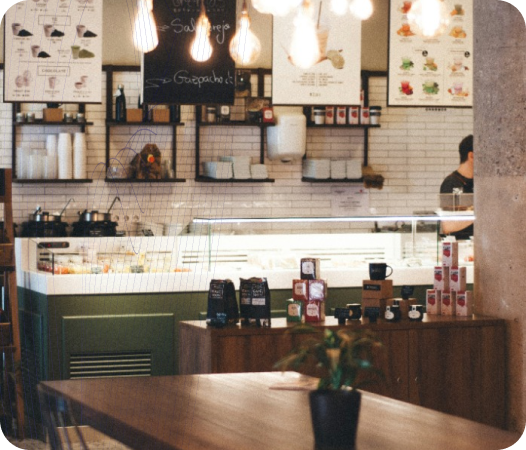
Переваги відкриття кав'ярні
Переваги відкриття кав'ярні




Планування відкриття кав'ярні
Ефективне планування має вирішальне значення для відкриття кав'ярні. Цей розділ охоплює дослідження ринку, розробку бізнес-плану та операційних стратегій, щоб закласти міцний фундамент для вашого бізнесу.

Дослідження ринку
Ретельне дослідження ринку допоможе вам зрозуміти вашу цільову аудиторію та конкурентів. Ці знання допоможуть вам у прийнятті бізнес-рішень та розробці стратегій.

Розуміння вашої цільової аудиторії
Визначення вашої цільової аудиторії є важливим кроком у відкритті кав'ярні. Враховуйте такі фактори, як вік, рівень доходу, спосіб життя та звички споживання кави. Розуміння демографічних характеристик та вподобань ваших потенційних клієнтів допоможе вам адаптувати ваші пропозиції до їхніх потреб та уподобань. Проводьте опитування, аналізуйте ринкові дані та відвідуйте інші кав'ярні, щоб отримати уявлення про свій цільовий ринок.

Аналіз конкурентів
Проаналізуйте місцевих конкурентів, щоб знайти прогалини на ринку та можливості для диференціації. Оцініть їхні сильні та слабкі сторони, цінові стратегії та відгуки клієнтів. Розуміння того, що пропонують інші кав'ярні у вашому районі, допоможе вам визначити унікальні торгові пропозиції для вашого бізнесу. Шукайте способи запропонувати щось особливе, чи то унікальне меню, виняткове обслуговування клієнтів або особливу атмосферу.
Розробка
бізнес-плану
Добре складений бізнес-план має важливе значення для забезпечення фінансування та керівництва вашим бізнесом. Він повинен включати фінансові прогнози, маркетингові стратегії та операційний план.
Розробка бізнес-плану
Добре складений бізнес-план має важливе значення для забезпечення фінансування та керівництва вашим бізнесом. Він повинен включати фінансові прогнози, маркетингові стратегії та операційний план.

Фінансові прогнози
Створіть детальні фінансові прогнози, включно з витратами на запуск, операційними витратами та оцінкою доходів. Врахуйте такі витрати, як оренда, комунальні послуги, заробітна плата, обладнання та початкові запаси. Фінансові прогнози допоможуть вам зрозуміти фінансові потреби вашого бізнесу та поставити реалістичні цілі. Включіть у фінансовий план звіти про рух грошових коштів, прогнози прибутків і збитків та аналіз беззбитковості.

Маркетингова стратегія
Розробіть комплексну маркетингову стратегію, що включає як цифрові, так і традиційні маркетингові методи. Сплануйте, як охопити вашу цільову аудиторію за допомогою соціальних мереж, місцевої реклами, заходів та промо-акцій. Ваша маркетингова стратегія повинна визначати, як ви будете залучати та утримувати клієнтів, підвищувати впізнаваність бренду та генерувати продажі. Використовуйте різні канали, такі як соціальні мережі, email-маркетинг, контент-маркетинг та місцеві партнерства.

Операційний план
Складіть чіткий операційний план, що охоплює щоденні операції, управління ланцюгами постачання та політику обслуговування клієнтів. Визначте ролі та обов'язки, робочий процес і стандартні операційні процедури. Операційний план гарантує, що ваша кав'ярня працюватиме безперебійно та ефективно. Він має охоплювати все – від процедур відкриття та закриття до управління запасами, графіків роботи працівників і стандартів обслуговування клієнтів.
Юридичні та фінансові аспекти
Орієнтуватися в юридичних і фінансових аспектах започаткування кавового бізнесу дуже важливо. У цьому розділі ви дізнаєтеся про структуру бізнесу, ліцензування, бюджетування та варіанти фінансування.

Структура бізнесу та ліцензування
Вибір правильної бізнес-структури та отримання необхідних ліцензій і дозволів є основними кроками на шляху до відкриття кав'ярні.

Вибір бізнес-структури
-
Одноосібне володіння: Проста і легка у створенні, але не пропонує захисту особистої відповідальності.
-
Товариство з обмеженою відповідальністю (ТОВ): Забезпечує захист відповідальності та гнучкість.
-
Корпорація: Підходить для великого бізнесу, пропонує захист відповідальності та потенційні податкові пільги.

Отримання ліцензій та дозволів
-
Бізнес-ліцензію
-
Медичні дозволи
-
Дозвіл на обробку харчових продуктів
-
Дозволи на вивіски
Бюджетування та фінансування
Правильне бюджетування та забезпечення достатнього фінансування є життєво важливими для успіху вашої кав'ярні. Вивчіть початкові витрати та різні джерела фінансування.

Початкові витрати
Загальні витрати на запуск охоплюють:
-
Обладнання: Кавомашини, кавомолки, холодильні установки
-
Ремонт: Дизайн інтер'єру, меблі, світильники
-
Інвентар: Кавові зерна, молоко, сиропи, випічка
-
Маркетингові витрати: Початкова реклама, рекламні матеріали
Створення детального бюджету допоможе вам керувати своїми фінансами та гарантувати, що у вас буде достатньо капіталу для покриття всіх необхідних витрат.
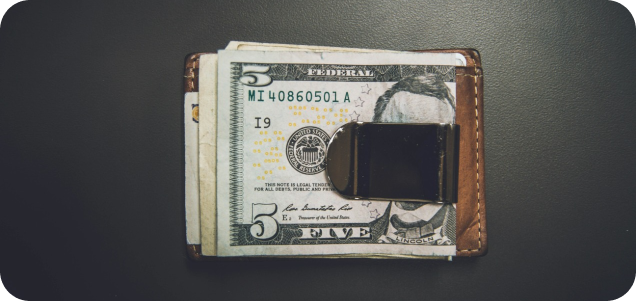
Варіанти фінансування
- Особисті заощадження
- Банківські кредити
- Інвестори
- Краудфандинг

Розрахунок витрат на відкриття кав'ярні

Обладнання
Інвестиції у високоякісне обладнання мають важливе значення для стабільної якості продукції:
-
Еспресо-машини: від $ 2,000 до $10,000+
-
Кавомолки: від $500 до $2,000
-
Кавоварки: від $500 до $2,500
-
Холодильні установки: від $1,000 до $5,000
-
POS-системи: від $1,000 до $2,500
Інвестуючи у високоякісне обладнання, ви гарантуєте, що ваша кав'ярня зможе надавати стабільну та якісну продукцію, що є життєво важливим для задоволення потреб клієнтів та повторних відвідувань.

Реконструкція
Створення привабливого простору може потребувати значних ремонтних робіт:
-
Дизайн інтер'єру: від $5,000 до $20,000
-
Меблі та світильники: від $5,000 до $15,000
-
Освітлення: від $2,000 до $5,000
Ремонт допоможе створити комфортну та гостинну атмосферу, яка приваблює клієнтів і заохочує їх проводити час у вашій кав'ярні.

Інвентаризація
Початковий інвентар для початку роботи включає різні матеріали:
-
Кавові зерна: від $1,000 до $3,000
-
Молоко та сиропи: від $500 до $1,500
-
Випічка та закуски: від $500 до $2,000
-
Чашки, серветки та посуд: від $500 до $1,000
Добре укомплектовані запаси гарантують, що ви зможете задовольнити попит клієнтів без перебоїв.

Витрати на маркетинг
Просування вашої нової кав'ярні має важливе значення для успішного запуску:
-
Початкова реклама: від $1,000 до $5,000
-
Рекламні матеріали: від $500 до $1,500
-
Налаштування веб-сайту та соціальних мереж: від $500 до $2,000
Ефективний маркетинг допомагає залучити клієнтів, підвищити впізнаваність бренду та забезпечити вашу присутність у суспільстві.

Інші витрати
Інші витрати, які слід врахувати:
-
Ліцензії та дозволи: від $500 до $2,000
-
Страхування: від $500 до $2,000 щорічно
-
Комунальні послуги та депозити: від $1,000 до $3,000
Ці різні витрати є важливими для юридичних та операційних аспектів вашої кав'ярні.
Плануючи та враховуючи в бюджеті ці витрати на відкриття кав'ярні, ви зможете забезпечити себе необхідними ресурсами для успішного запуску та підтримки своєї кав'ярні.
Відкриття кав'ярні
Відкриття кав'ярні передбачає вибір місця розташування, дизайн приміщення та пошук постачальників. Цей розділ містить докладні інструкції щодо кожного кроку.

Вибір місця розташування
Вибір стратегічного місця, яке приваблює великий пішохідний трафік і відповідає потребам вашого бізнесу, має вирішальне значення.

Фактори, які слід враховувати
Вибираючи місце розташування, враховуйте наступне:
-
Пішохідний трафік: Зона з високим пішохідним трафіком збільшує шанси на залучення клієнтів.
-
Доступність: Переконайтеся, що до вашого магазину легко дістатися громадським транспортом і що він має достатню кількість місць для паркування.
-
Видимість: Помітне розташування допомагає привернути увагу та привабити перехожих.
-
Близькість до конкурентів: Проаналізуйте сусідні підприємства, щоб знайти правильний баланс між конкуренцією та попитом.
Правильне розташування може суттєво вплинути на успіх вашого бізнесу, залучивши більше клієнтів і збільшивши продажі.

Переговори про оренду
Домовтеся про вигідні умови оренди, включаючи орендну плату, тривалість та надбавки на ремонт. Переконайтеся, що договір оренди відповідає вашому бізнес-плану та фінансовим прогнозам. Враховуйте такі фактори, як тривалість оренди, можливість її продовження та будь-які обмеження на модифікацію приміщення. Чітке розуміння умов оренди допоможе вам уникнути потенційних конфліктів і забезпечити стабільне бізнес-середовище.
Проєктування кав'ярні
Створення гостинної атмосфери та ефективного планування покращує досвід клієнтів та робочий процес персоналу.

Планування та атмосфера
Зосередьтеся на наступних аспектах, щоб створити привабливий і функціональний простір:
-
Розташування місць для сидіння: Передбачте різноманітні варіанти сидячих місць, включаючи столи, дивани та барні стільці.
-
Освітлення: Використовуйте поєднання природного та штучного освітлення для створення теплої та привабливої атмосфери.
-
Декор: Обирайте декор, який відображає ваш бренд і створює затишну атмосферу.
-
Потік: Забезпечте логічний потік для клієнтів і персоналу, щоб вони могли легко переміщатися по простору.
Добре спроєктована кав'ярня може створити комфортне і привабливе середовище, яке спонукає клієнтів повертатися.

Основне обладнання
Інвестиції у високоякісне обладнання мають важливе значення для забезпечення стабільної та якісної продукції для ваших клієнтів. Основне обладнання включає в себе:
-
Еспресо-машини
-
Кавомолки
-
Кавоварки
-
Холодильні установки
-
Системи для касових терміналів (POS)
Досліджуйте та обирайте обладнання, яке відповідає вашому бюджету та потребам бізнесу.
Пошук постачальників
Налагодьте відносини з надійними постачальниками, щоб забезпечити стабільне постачання якісних інгредієнтів та обладнання.

Кавові зерна
Вибирайте високоякісні кавові зерна, досліджуючи та налагоджуючи стосунки з надійними постачальниками. Враховуйте такі фактори, як походження, профіль обсмажування та практики сталого розвитку. Якісні кавові зерна – це основа вашого асортименту, тому не пошкодуйте часу на пошук найкращих постачальників.

Обладнання та інвентар
Закуповуйте інші необхідні матеріали та підтримуйте організовану систему інвентаризації. Сюди входять:
-
Горнятка
-
Серветки
-
Сиропи
-
Молоко
-
Випічка
Впровадження ефективної системи управління запасами допоможе вам відстежувати рівень запасів, зменшити кількість відходів та забезпечити наявність необхідних матеріалів під рукою.
Підбір персоналу для відкриття кав'ярні
Ефективний підбір персоналу та управління ним – ключ до успіху вашої кав'ярні. Цей розділ охоплює стратегії підбору, навчання та управління персоналом.

Наймання персоналу
Визначення ключових ролей, необхідних у вашій кав'ярні, та впровадження ефективних стратегій підбору персоналу має вирішальне значення.

Ролі для заповнення
Окресліть основні посади, на які слід наймати персонал, наприклад:
-
Бариста
-
Кухонний персонал
-
Менеджери
Кожна роль відіграє важливу роль у безперебійній роботі вашої кав'ярні. Чітко визначте посадові інструкції та очікування для кожної позиції.

Стратегії підбору персоналу
Впроваджуйте ефективні стратегії підбору персоналу, зокрема:
-
Оголошення про вакансії: Використовуйте онлайн-дошки оголошень про вакансії, місцеві газети та соціальні мережі для розміщення оголошень про вакансії.
-
Співбесіди: Проводьте ретельні співбесіди, щоб оцінити навички кандидатів та їхню відповідність вашій команді.
-
Пробні зміни: Пропонуйте пробні зміни, щоб оцінити потенційних працівників у реальному робочому середовищі.
Шукайте кандидатів з відповідним досвідом та пристрастю до обслуговування клієнтів. Використовуйте різні платформи для розміщення оголошень про вакансії та залучення різноманітних кандидатів.
Навчання та управління
Інвестиції у комплексні навчальні програми та використання інструментів управління для відстеження продуктивності та графіків роботи співробітників є важливими для підтримання високих стандартів обслуговування.

Навчальні програми
Інвестуйте в комплексні навчальні програми, щоб забезпечити стабільну якість обслуговування. Охоплюйте такі теми, як приготування кави, обслуговування клієнтів і протоколи безпеки. Регулярні тренінги допоможуть персоналу бути в курсі найкращих практик і вдосконалювати свої навички.
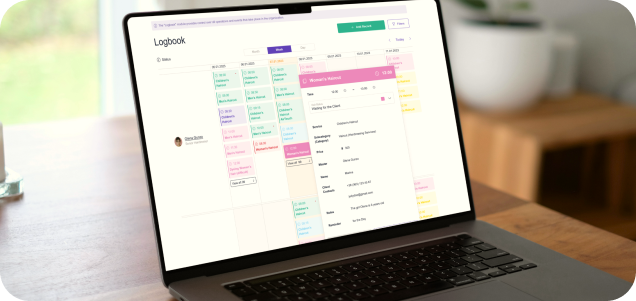
Інструменти управління персоналом
Використовуйте такі інструменти, як POS-система для кав'ярні, щоб відстежувати ефективність роботи співробітників, графіки та заробітну плату. ME-POS пропонує багаторівневі облікові записи співробітників, відстеження робочого часу та детальну звітність про діяльність персоналу, що може підвищити ефективність та забезпечити справедливу компенсацію. Система розрахунку заробітної плати в ME-POS також спрощує управління зарплатами та пільгами.
Роль маркетингу у відкритті кафе
Ефективний маркетинг має вирішальне значення для залучення клієнтів і розбудови вашого бренду. Цей розділ містить стратегії як для онлайн, так і для офлайн-маркетингу.

Створення бренду
Розробка унікальної айдентики бренду, яка резонує з вашою цільовою аудиторією та вирізняє вас серед конкурентів, є надзвичайно важливою.

Фірмовий стиль
Розробіть унікальну айдентику бренду, яка резонуватиме з вашою цільовою аудиторією. Це включає в себе дизайн логотипа, фірмові кольори та загальне повідомлення бренду. Ваша айдентика повинна відображати цінності та атмосферу вашої кав'ярні, створюючи незабутній досвід для клієнтів.

Маркетингові матеріали
Створіть основні маркетингові матеріали, такі як:
-
Меню
-
Візитки
-
Вивіски
Якісні маркетингові матеріали допоможуть створити професійний імідж та залучити нових клієнтів. Переконайтеся, що ваш брендинг є послідовним у всіх матеріалах.
Стратегії онлайн та офлайн маркетингу
Впроваджуйте мікс цифрових і традиційних маркетингових тактик, щоб охопити ширшу аудиторію.

Маркетинг у соціальних мережах
Використовуйте платформи соціальних мереж для взаємодії з клієнтами, обміну оновленнями та просування спеціальних пропозицій. Використовуйте Facebook, Instagram, Twitter та інші відповідні платформи, щоб охопити ширшу аудиторію. Регулярно публікуйте цікавий контент, наприклад, фотографії вашої кави, залаштункові знімки вашого магазину та відгуки клієнтів.

Локальна реклама
Впроваджуйте ефективні методи локальної реклами, такі як:
-
Розповсюдження флаєрів
-
Партнерство з місцевим бізнесом
-
Участь у громадських заходах
Локальна реклама може допомогти вам охопити потенційних клієнтів у вашому регіоні та створити сильну присутність на місцевому ринку.
Запуск кафе
Успішний запуск задає тон вашому бізнесу. Цей розділ присвячений плануванню відкриття та урочистого відкриття для залучення та утримання клієнтів.

М'яке відкриття
Стратегічним підходом є використання "м'якого" відкриття для тестування роботи закладу, навчання персоналу та збору перших відгуків клієнтів перед урочистим відкриттям.

Планування "м'якого" відкриття
М'яке відкриття дозволяє вам протестувати роботу, навчити персонал і зібрати перші відгуки клієнтів. Це допомагає виявити та розв'язати будь-які проблеми до урочистого відкриття. Використовуйте цей період, щоб налагодити процеси та переконатися, що все працює безперебійно.
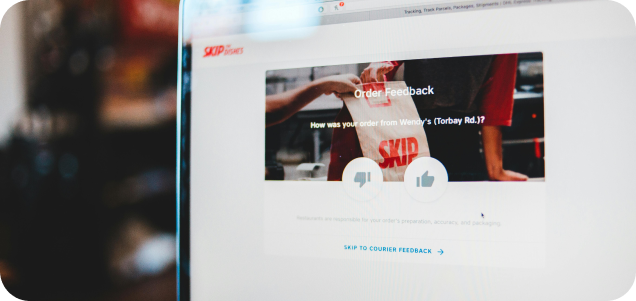
Збір відгуків
Збирайте відгуки клієнтів та реагуйте на них під час м'якого відкриття, щоб внести необхідні корективи. Це допоможе підвищити якість обслуговування та задоволеність клієнтів. Використовуйте опитування, картки з коментарями та прямі розмови для збору відгуків від клієнтів.
Урочисте відкриття
Планування незабутнього урочистого відкриття для створення ажіотажу та залучення клієнтів має вирішальне значення.

Планування заходів
Сплануйте незабутню подію з нагоди відкриття, щоб створити ажіотаж і привабити клієнтів. Подумайте про живу музику, безплатні зразки та інші цікаві заходи. Добре спланована подія може викликати ажіотаж і привернути увагу до вашої нової кав'ярні.

Акції та знижки
Пропонуйте рекламні стратегії, такі як знижки, програми лояльності та спеціальні пропозиції, щоб залучити нових клієнтів і заохотити їх до повторних відвідувань. Промо-акції можуть допомогти збільшити початкові продажі та сформувати базу лояльних клієнтів.
Управління після відкриття кав'ярні
Ефективне управління щоденними операціями та фінансами має вирішальне значення для довгострокового успіху. У цьому розділі ви дізнаєтеся про управління запасами, обслуговування клієнтів та фінансовий контроль.

Щоденні операції
Зосередження на підтримці ефективних щоденних операцій, включаючи управління запасами та бездоганне обслуговування клієнтів, є дуже важливим.

Управління запасами
Усвідомте важливість ефективного управління запасами. Використовуйте такі інструменти, як ME-POS, щоб оптимізувати цей процес і забезпечити наявність необхідних матеріалів без надмірних запасів. ME-POS допомагає контролювати наявність позицій, вести облік залишків і синхронізувати кілька складів, що полегшує ефективне управління запасами.

Найкращі практики обслуговування клієнтів
Поділіться найкращими практиками для забезпечення бездоганного обслуговування клієнтів. Це включає в себе тепле привітання клієнтів, швидке реагування на скарги та створення позитивного загального враження від відвідування кав'ярні. Відмінне обслуговування клієнтів може відрізнити вашу кав'ярню від конкурентів і підвищити лояльність клієнтів.
Фінансовий менеджмент
Моніторинг та управління фінансами кав'ярні для забезпечення прибутковості та стабільності є життєво важливим.
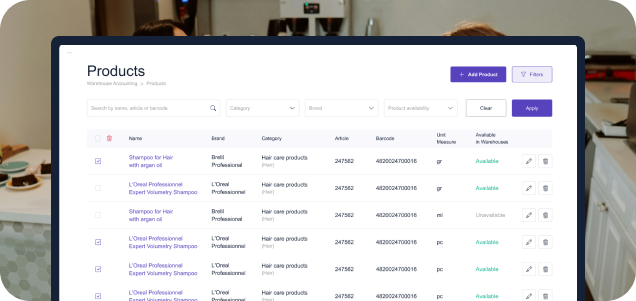
Відстеження продажів і витрат
Слідкуйте за продажами та витратами, щоб забезпечити прибутковість та визначити сфери для покращення. Ведіть детальні записи та регулярно їх переглядайте. Фінансовий менеджмент має вирішальне значення для підтримки фінансового здоров'я вашого бізнесу.

Використання POS-систем
Скористайтеся перевагами використання ME-POS для ефективного відстеження продажів, звітності та аналітики. ME-POS надає комплексні програмні рішення для автоматизації продажів, управління ресурсами та персоналом, а також взаємодії з клієнтами, і все це через зручний інтерфейс. Це допомагає підвищити продуктивність та оптимізувати операції.
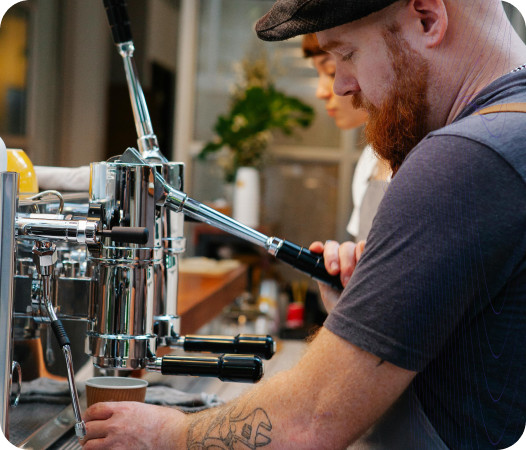
Висновок
Етапи відкриття кав'ярні передбачають ретельне планування, прийняття стратегічних рішень та ефективне управління. Дотримуючись цих кроків і використовуючи правильні інструменти, такі як ME-POS, власники кав'ярень можуть створити успішний і успішний бізнес. Ретельне планування, розуміння свого ринку, управління фінансами та відмінне обслуговування клієнтів – це ключ до успіху.
Розглядаючи витрати на запуск кав'ярні, пам'ятайте про початкові інвестиції, необхідні для обладнання (еспресо-машини, кавомолки, холодильні установки), ремонту (дизайн інтер'єру, меблі, світильники), інвентарю (кавові зерна, молоко, сиропи, випічка), а також маркетингові витрати (початкова реклама, промоматеріали).
Інвестиції в якісне обладнання та ефективні системи управління, такі як ME-POS, спростять ваші операції та підвищать продуктивність, що дозволить вам зосередитися на наданні виняткового досвіду клієнтам. Зробіть стрибок, інвестуйте у свою пристрасть і побачите, як ваша кав'ярня стане улюбленим місцем для спілкування.
Переглянути більше
Related Articles
Переглянути більше









